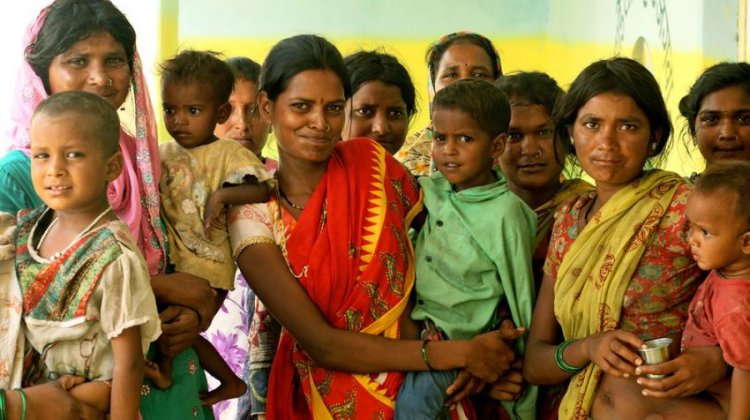India projected to surpass China as world’s most populous in 2023: World Population Prospects 2022
The global population is growing at its slowest rate since 1950, having fallen under 1 per cent in 2020. The latest projections by the UN suggest that the world’s population could grow to around 8.5bn in 2030 and 9.7bn in 2050. It is projected to reach a peak of around 10.4bn people during the 2080s and to remain at that level until 2100.

New York
The global population is projected to reach 8bn on 15 November 2022, and India is projected to surpass China as the world’s most populous country in 2023, according to World Population Prospects 2022, a UN report today on World Population Day.
“This year’s World Population Day falls during a milestone year, when we anticipate the birth of the Earth’s eight billionth inhabitant. This is an occasion to celebrate our diversity, recognize our common humanity, and marvel at advancements in health that have extended lifespans and dramatically reduced maternal and child mortality rates,” said United Nations (UN) Secretary-General António Guterres.
The global population is growing at its slowest rate since 1950, having fallen under 1 per cent in 2020. The latest projections by the UN suggest that the world’s population could grow to around 8.5bn in 2030 and 9.7bn in 2050. It is projected to reach a peak of around 10.4bn people during the 2080s and to remain at that level until 2100.
World Population Prospects 2022 also states that fertility has fallen markedly in recent decades for many countries. Today, two-thirds of the global population live in a country or area where lifetime fertility is below 2.1 births per woman, roughly the level required for zero growth in the long run for a population with low mortality. The populations of 61 countries or areas are projected to decrease by 1 per cent or more between 2022 and 2050, owing to sustained low levels of fertility and, in some cases, elevated rates of emigration.
More than half of the projected increase in the global population up to 2050 will be concentrated in eight countries: the Democratic Republic of the Congo, Egypt, Ethiopia, India, Nigeria, Pakistan, the Philippines and the United Republic of Tanzania. Countries of sub-Saharan Africa are expected to contribute more than half of the increase anticipated through 2050.
“The relationship between population growth and sustainable development is complex and multidimensional,” said Liu Zhenmin, UN Under-Secretary-General for Economic and Social Affairs. “Rapid population growth makes eradicating poverty, combating hunger and malnutrition, and increasing the coverage of health and education systems more difficult. Conversely, achieving the Sustainable Development Goals, especially those related to health, education and gender equality, will contribute to reducing fertility levels and slowing global population growth.”
In most countries of sub-Saharan Africa, as well as in parts of Asia and Latin America and the Caribbean, the share of the population at working age (between 25 and 64 years) has been increasing thanks to recent reductions in fertility. This shift in the age distribution provides a time-bound opportunity for accelerated economic growth per capita, known as the “demographic dividend”.
Global life expectancy at birth reached 72.8 years in 2019, an improvement of almost 9 years since 1990. Further reductions in mortality are projected to result in average global longevity of around 77.2 years in 2050. Yet in 2021, life expectancy for the least developed countries lagged 7 years behind the global average.
The Covid-19 pandemic has affected all components of population change. Global life expectancy at birth fell to 71.0 years in 2021.
“Further actions by Governments aimed at reducing fertility would have little impact on the pace of population growth between now and mid-century, because of the youthful age structure of today’s global population. Nevertheless, the cumulative effect of lower fertility, if maintained over several decades, could be a more substantial deceleration of global population growth in the second half of the century,” added John Wilmoth, Director of the Population Division of the United Nations Department of Economic and Social Affairs (UN DESA).



 Join the RuralVoice whatsapp group
Join the RuralVoice whatsapp group









































